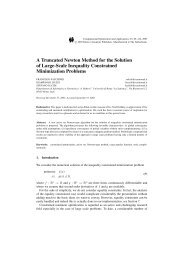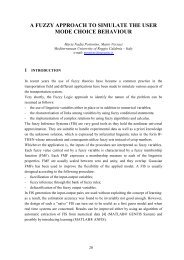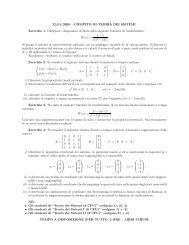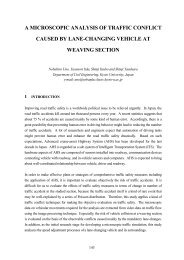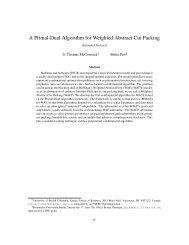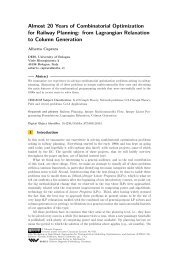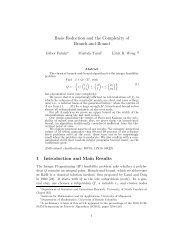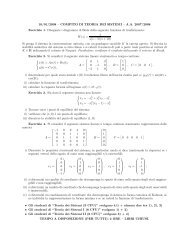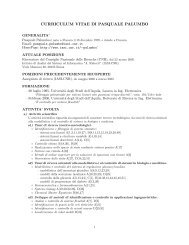GENERATING DENSE RAILWAY SCHEDULES 1. Introduction
GENERATING DENSE RAILWAY SCHEDULES 1. Introduction
GENERATING DENSE RAILWAY SCHEDULES 1. Introduction
You also want an ePaper? Increase the reach of your titles
YUMPU automatically turns print PDFs into web optimized ePapers that Google loves.
Generating dense railway schedules 295<br />
has an orderingσp j i<br />
of its elements which is the precedence on the associated track. The<br />
optimisation problem consists of finding partitions and orderings such that the resulting<br />
cycle time is minimal.<br />
The very similar job shop scheduling problem which isNP-hard, can be reduced to<br />
this timetabling problem. Therefore, it is futile to aim at solving the problem optimally.<br />
Instead, a good heuristic is needed to find a satisfactory solution within reasonable time.<br />
Initial feasible solutions can be generated using global train precedence rules. It is also<br />
conceivable that these are in fact rather good initial solutions since one does not expect<br />
many train overtakings within a station region. Yet, some overtakings should take place as<br />
for example there are minor stations within the region in which only commuter trains stop.<br />
The other trains should not be forced to wait and, thus, repartitioning and reordering the<br />
train precedence locally will yield better results. A matter of interest is therefore to detect<br />
potentially good adjustments of the local train precedence.<br />
The Petri Net modelling gives insight here. Calculating the critical cycle shows which<br />
trains prevent a shorter cycle time for the current set of precedence. Only changing precedence<br />
of trains that belong to the critical cycle might decrease the cycle time since otherwise<br />
the previous critical cycle still exists. This leads to a local search heuristic for condensing<br />
timetables using the following neighbourhood:<br />
Given is a timetableΘwith corresponding precedence orders and its critical circuit.<br />
Then, we define the critical timetable neighbourhood N C (Θ) as the set of all timetables ˆΘ<br />
that are reached fromΘ by moving one train to a new position in one of the partitionings<br />
Tp j i<br />
such that a precedence on the critical circuit ofΘis altered.<br />
Note that N C (Θ) could be empty. This is the case if all places on the critical circuit are<br />
either train travelling times or restrictions due to train connections. Therefore, an empty<br />
critical timetable neighbourhood implies that the current solution is globally optimal as the<br />
critical cycle consists of unalterable successions of transitions. A further condensation of<br />
the timetable could only be achieved by changing the train service intention or changing<br />
the track topology. However, an event graph may be globally optimal without having an<br />
empty critical timetable neighbourhood.<br />
Tests showed that a local search heuristic which only allows improvements ends in<br />
unsatisfactory local optima, see the following section. Increasing the neighbourhood size<br />
has a major drawback: If more than one change is allowed in each step, the rule that only<br />
changes on the critical cycle have to be considered does not hold anymore. Thus, the notion<br />
on potentially good changes is lost. Therefore, a heuristic that temporarily allows worse<br />
solutions is preferable to changing the neighbourhood.<br />
Simulated Annealing with a constant factor temperature reduction scheme and fixed<br />
numbers of inner and outer iterations is chosen. However, only a modest number of iterations<br />
is conducted as evaluating a solution is costly. Instead in order to broadly cover the solution<br />
space, the algorithm restarts from various random starting points since generating feasible<br />
initial solutions is computationally cheap.



